Categories Pastry Chef Articles
Around the world with Break! (I)
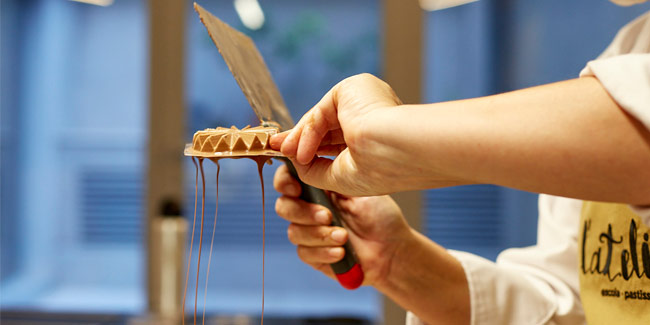
There are very different ways to immerse yourself when reading the book Break!, by Eric Ortuño. One of the most original is by exploring the 62 tea cakes featured within its pages through their respective countries and their gastronomic traditions. These are very heterogeneous iconic biscuits from over 14 countries that stand out in this extensive recipe book, benchmarks with which to renew and offer a unique assortment. Italy, France, Scotland, the USA, Spain, Argentina, Germany, Morocco, the Netherlands, Japan, Denmark, England, Turkey, Iran, Austria and more come together in the nearly 300 pages of this book.
Tea pastries with a sponginess as attractive as that of the crocant des Cordes, fillings as sweet as those of the alfajor and the stroopwaffle, the very thin sheets of the phyllo pastry of the honeyed flavor baklava, and proposals as cinematographic as the fortune cookie follow one after the other in Break! Creations from very different origins that we group by country below and that are accompanied by their respective stories and the most outstanding technical details.

Discover Break! by Eric Ortuño
Italy: Amaretti, Grissini with Kimchi and Sesame, Spring Flowers
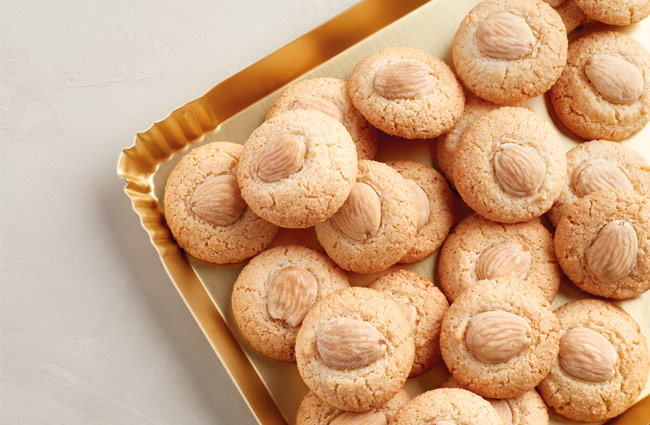
The book covers the Italian peninsula through pastries such as their well-known amarettis, pieces with a more bakery dough such as the grissini, and spring flowers, which are molded with a special press. The transalpine country shows some of its best specialties to accompany coffee and tea with doughs with very varied crunchy textures and flavors as heterogeneous as almonds, kimchi, and sesame, among other ingredients selected by Eric Ortuño.
Moreover, there are the two best-known amaretti varieties, di Saronno and di Sassello. The former is made in L’Atelier Barcelona, which is crunchier and more brittle than the latter, which is more like cake.
France: Crocant de Cordes and Sablé Breton
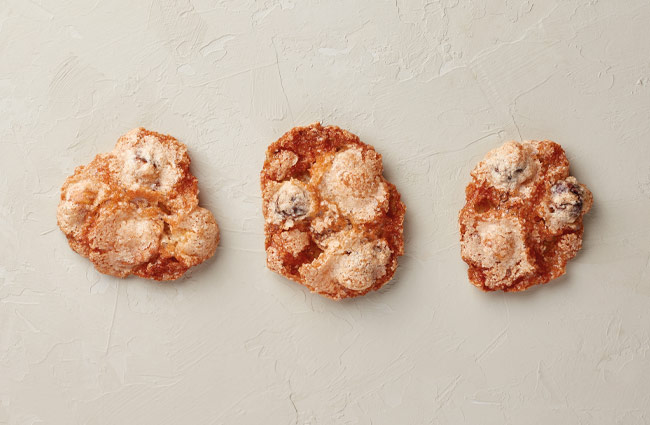
In France, we find both local tea pastries unique due to their sponginess, fragility, and crunchy texture, like the Crocant de Cordes, as well as as universal as the sablé, the one that has most influenced the making of biscuits around the world. Within the airy sablés, the work stops at the sablé Breton, a great reference for Eric Ortuño. In all cases they are simple recipes with small variations that give very different results.
The origin of Crocant des Cordes dates back to the end of the 19th century and is attributed to Jacques Sicard, a pastry chef from the medieval village of Cordes-sur-Ciel. Every June, this French town, considered the world capital of the croquant, organizes a celebration in honor and as a tribute to this sweet rooted in this region. Ortuño learned this recipe in Cordes-sur-Ciel when he worked at the Musée des Arts du Sucre et du Chocolat and at the maison of MOF Yves Thuriès, under the command of his teacher, Jean-François Arnaud.
Spain: Musico, Barquillo, Polvorón, Virutas and Carquinyoli
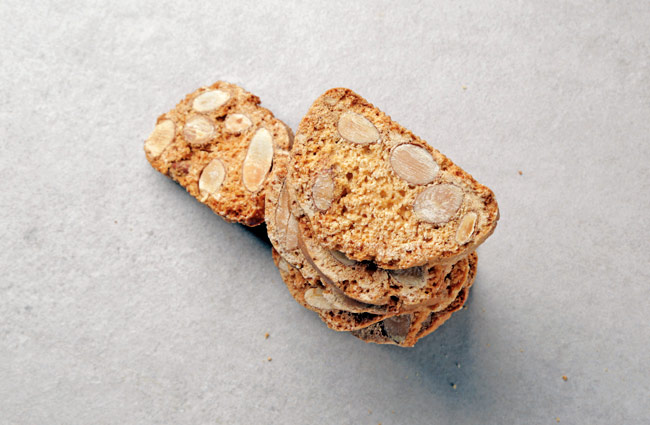
The Spanish biscuit tradition is very present in a book that reviews very heterogeneous specialities. Thus, for example, Eric Ortuño makes a version in a different format, in the form of a ring, a sweet that is as Spanish as it is Mediterranean, the musico, based on a crumble usually made up of four nuts, hazelnuts, almonds, raisins, and dried figs, on a chocolate base. From the musico we jump to the popular barquillo, a wafer rolled with a light and crunchy dough based on flour, sugar and butter, flavored with vanilla. Originally from the Sevillian Steppe (Andalusia), we also find the Polvorón, one of the Christmas specialties par excellence in Spain. A tea pastry which is very different from the rest because its basic ingredients are lard and toasted flour. In addition to flavoring the dough with cinnamon and almonds, another of the most genuine characteristics of the Polvorón is the thin crust that protects the product after a few minutes of baking.
We continue with Spanish tea pastries with the traditional virutas that are made every March 19 on the occasion of Father’s Day and in honor of Saint Joseph. Ortuño makes them with Dulcey peanuts and they are common in autonomous communities such as Valencia, Navarra, and the Basque Country, where they are called txirloras. In all the preparations, the shape of the biscuit represents the wood shavings that are associated with Saint Joseph’s carpenter’s trade.
Finally, the carquinyolis could not be left out, a consumption that is deeply rooted in Catalonia and that is characterized by having a very dry and crunchy dough as a result of the double baking to which it is subjected in its production process. The largueta almond, cinnamon, and vanilla powder are the ingredients responsible for its flavor.
Argentina: Alfajor
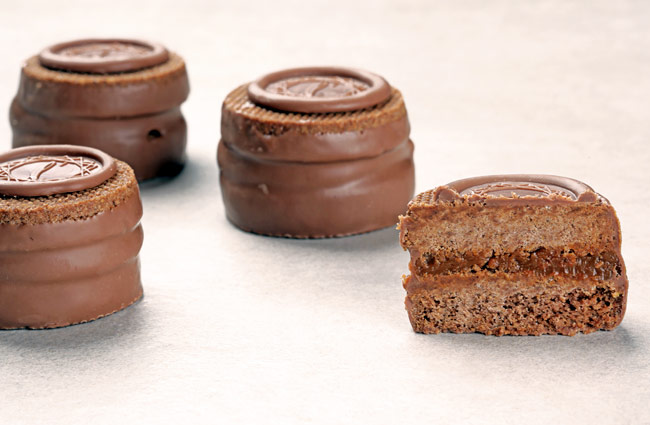
The Argentinian alfajor also makes its way into the book with a recipe by Felipe De Santa Cruz, a friend of Eric Ortuño, which highlights the filling of the biscuit, the dulce de leche. As Santa Cruz says, the alfajor must rest for a day with the filling before consumption to be at its ideal moment for tasting.
The name of this biscuit comes from the Hispano-Arabic al-hasú and, apparently, originates in al-Andalus, during the Muslim domination of Spain. In the colonial period it was exported to several Latin American countries that today have their own versions of the alfajor. These varieties owe their round or wafer shape to alfajores originating in Andalusia. Precisely in the book, ” Alfajor Argentino, Historia de un ícono“, Jorge D’Agostini defends the relevance of this biscuit in the gastronomic culture of his country and reports that its popularity began at the beginning of the 19th century.
Netherlands: Stroopwaffle
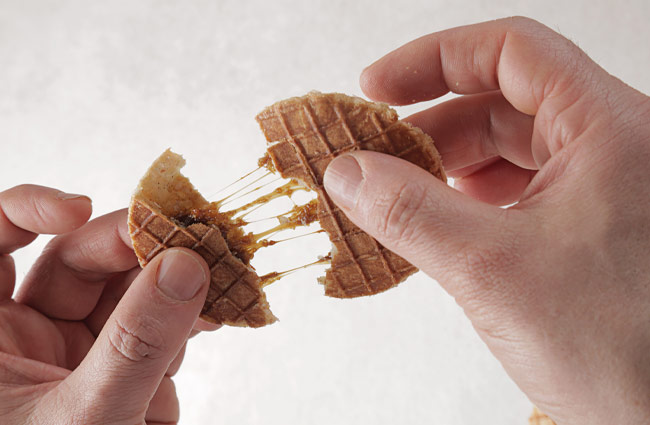
Here’s a riddle: which biscuit has a soft and spongy texture, a viscous and very sweet molasses filling, a fermented and firm dough, and is cooked on a griddle? Without a doubt we are talking about the Stroopwaffle, the most emblematic tea pastry in the Netherlands. It is a waffle-like biscuit that puffs up during cooking and splits in half like a pita bread. We highlight that the Dutch have a great tradition in the production of molasses, which began ever since they established their colonies in America with the exploitation of sugar mills.
Japan: The Fortune Cookie
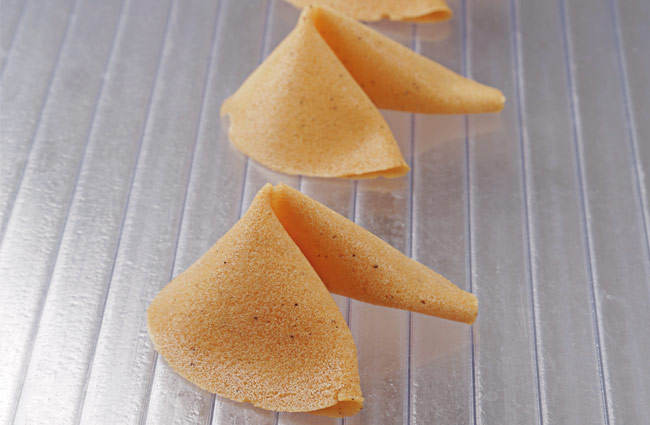
Although most people believe that its origin is Chinese, Japanese pastry chefs were the first to make them. Thus, as described by the journalist Jennifer 8 Lee in “The fortune cookie chronicles”, they became very popular in Japanese pastry shops in San Francisco that operated in the United States. The historical confusion is due to the fact that Chinese businessmen kept these pastry shops and after the Second World War they began to be served with the bill in Chinese restaurants. In the 1940s, many soldiers and sailors who went to these restaurants assumed that the sweet was part of traditional Chinese cuisine and began ordering them to take home. It is the beginning of what would become a prosperous industry in the US from the fifties.
The biscuit has thin, crunchy walls that are made with a very liquid dough similar to cigarilo dough, in which butter is replaced by sunflower oil, since the former was not used in Japanese or Chinese pastry in the 19th century.
England: The Gingerbread Biscuit

First it was Queen Elizabeth I of England in the 16th century, then in 1875 it was the English children’s folk tale “The Gingerbread Man” that made this sweet known throughout the world today. These are probably the two factors that have made the Gingerbread Biscuit popular all over the world. It is the nod that Break! dedicated to England. Ortuño’s is made with a flavored dough with the well-known Chinese five-spice mix, a perfect mix to provide the right sweetness, acidity, bitterness, umami, and salty notes to any preparation.
Turkey, Iran, and Arab countries: the Baklava
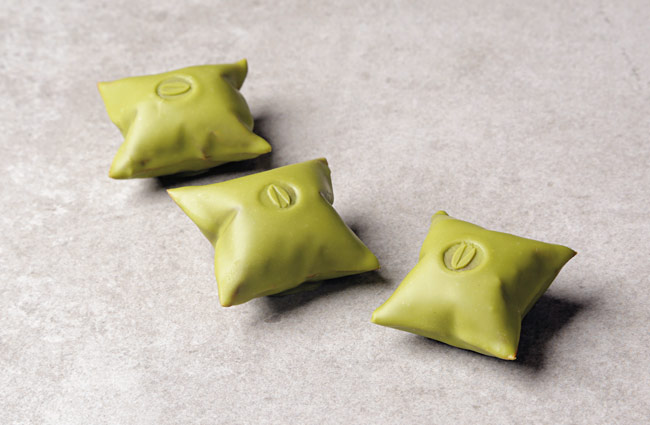
Emerging in the Ottoman Empire and rooted in the kitchens of the Turks, Abbasids, Seljuks, and Byzantines of Central Asia, the Baklava continues to be widely consumed in Turkey and Iran, as well as in other Arab countries. Traditionally made with pistachio paste or crushed walnuts and arranged on phyllo pastry, it is bathed in syrup or honey syrup.
Break! also counts with the occasional collaboration of the person in charge of I+Desserts, David Gil, who proposes a more modern version of the baklava with a phyllo dough that is puffed up and filled with a gianduja made with pistachio and the caramelized phyllo dough itself, a kumquat jam, and a pistachio cream. Finally, it is bathed in pistachio chocolate, which adds color, flavor, and protects the pastry from humidity.


